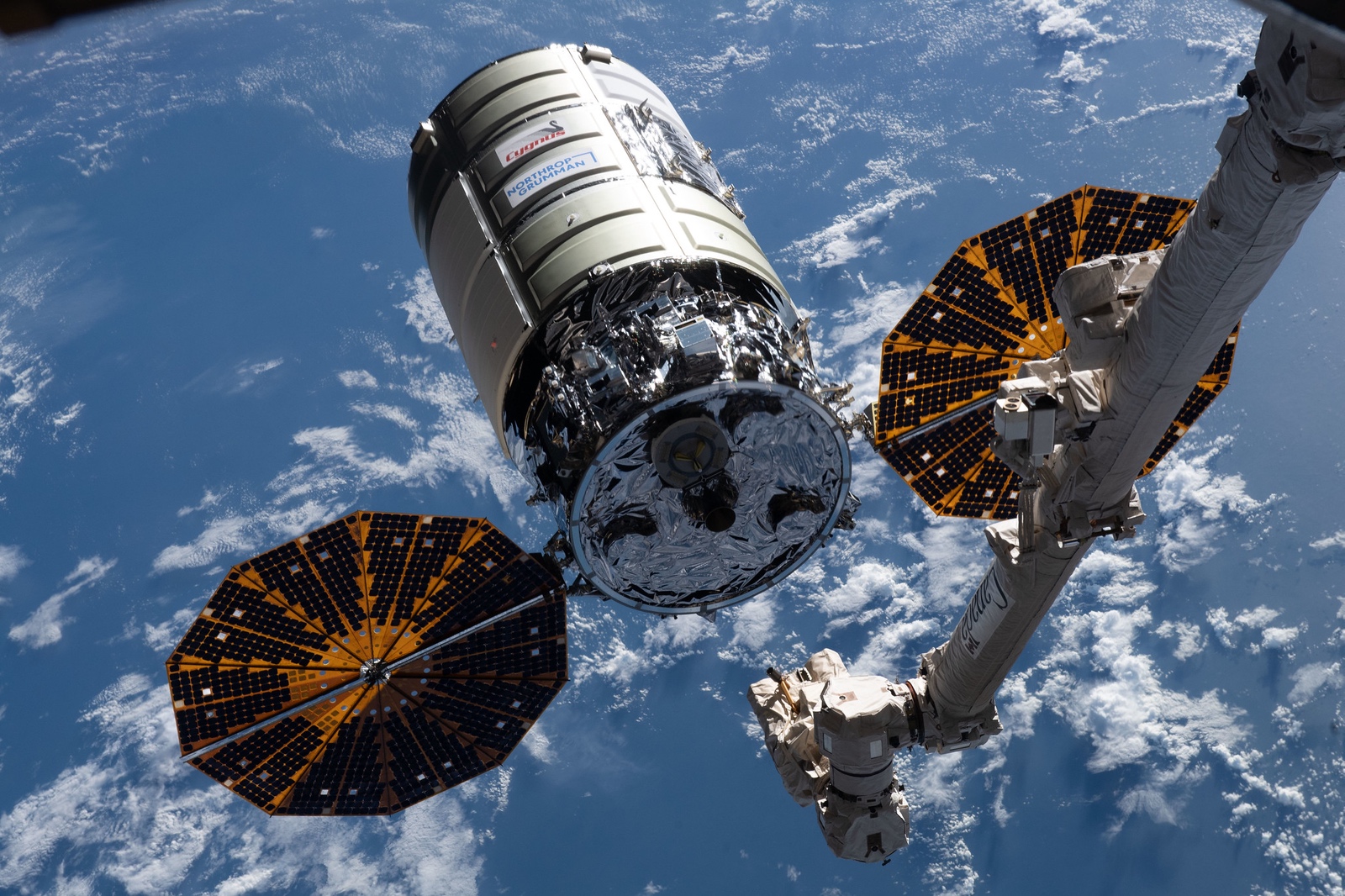SEATTLE — Northrop Grumman is planning upgrades to its Cygnus cargo vehicle, such as increased payload capacity, to support both the International Space Station and future commercial space stations.
In presentations at the International Space Station Research and Development Conference Aug. 2, company representatives outlined efforts to enhance the capabilities of the decade-old spacecraft to enable it to serve NASA and others in the coming decade.
“We’re looking at what we have to do with the Cygnus spacecraft, what we have to do with the services that it provides,” said Rick Mastracchio, director of strategy and business development at Northrop Grumman Space Systems. “We’re trying to prepare and think way ahead on how do we start updating the vehicle, making sure we have a spacecraft that will be flying 10 years from now, 20 years from now.”
Among those changes is increased payload capacity. The current version of the Cygnus can carry abut 3,750 kilograms of pressurized cargo to the station. An upgraded version in development will increase that to 5,000 kilograms, said Lucas Migliorini, cargo logistics development engineering manager at Northrop Grumman, in another conference presentation.
The “Mission B” version of Cygnus stretches the payload module of the spacecraft by 1.5 meters to accommodate the additional cargo. That version of Cygnus is scheduled to make its first flight on the NG-23 cargo mission, currently planned for launch in mid-2025. It will also be the first launch of the new Antares 330 with increased payload performance to accommodate the larger Cygnus.
Another change under consideration is how Cygnus attaches to the space station. The spacecraft is currently berthed to the station by Canadarm2 robotic arm, rather than actively dock to the station like SpaceX’s current version of the Dragon spacecraft.
“Particularly for commercial space stations, a big focus right now is on docking,” Migliorini said. Berthing requires a robotic arm, and some commercial stations may not have a suitable robotic arm, at least in their initial configurations.
Northrop is also emphasizing the ability of Cygnus to reboost the orbit of the ISS and potentially other stations. That has been tested on the ISS on previous Cygnus missions and will be demonstrated again on the NG-19 Cygnus, launched Aug. 1 and scheduled to arrive at the station early Aug. 4.
“We like to be able to do a couple of these per mission,” Migliorini said of reboost maneuvers. Those reboosts are done using propellant not needed for the spacecraft’s arrival at the station.
Northrop Grumman is leveraging Cygnus in other ways. The spacecraft is a key part of its proposed commercial space station, one of three that won funded Space Act Agreements in late 2021 through NASA’s Commercial LEO Destinations program for initial design work. The company received a separate unfunded Space Act Agreement in June for a “Persistent Platform” version of Cygnus designed to host uncrewed payloads that complements its station.
“Our strategy is to utilize hardware that we have already been working on,” Mastracchio said, that includes both Cygnus and the Habitation and Logistics Outpost (HALO) module Northrop is building for the lunar Gateway. “We’re trying to reuse as much of that hardware as possible to keep additional non-recurring engineering costs low.”
The company is offering Cygnus to other companies working on commercial space stations. “We’re talking to all the potential Commercial LEO Destination providers, all the commercial space station providers,” he said. Those discussions include determining what services that Cygnus offers the ISS that may not be needed for commercial stations as well as new services that Cygnus could offer those future stations.
Cygnus made its first flight to the ISS on a demonstration mission in September 2013 and NG-19 is the 20th Cygnus launched to date, including one lost in an Antares launch failure in October 2014. Migliorini said the company is studying doubling the current Cygnus production rate of two vehicles a year to meet the needs of commercial stations.
